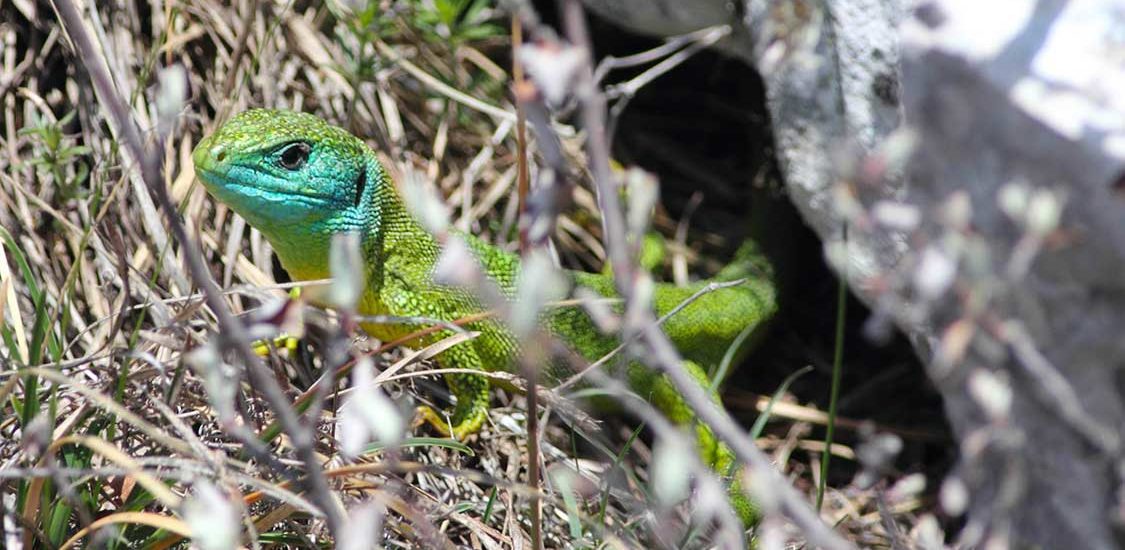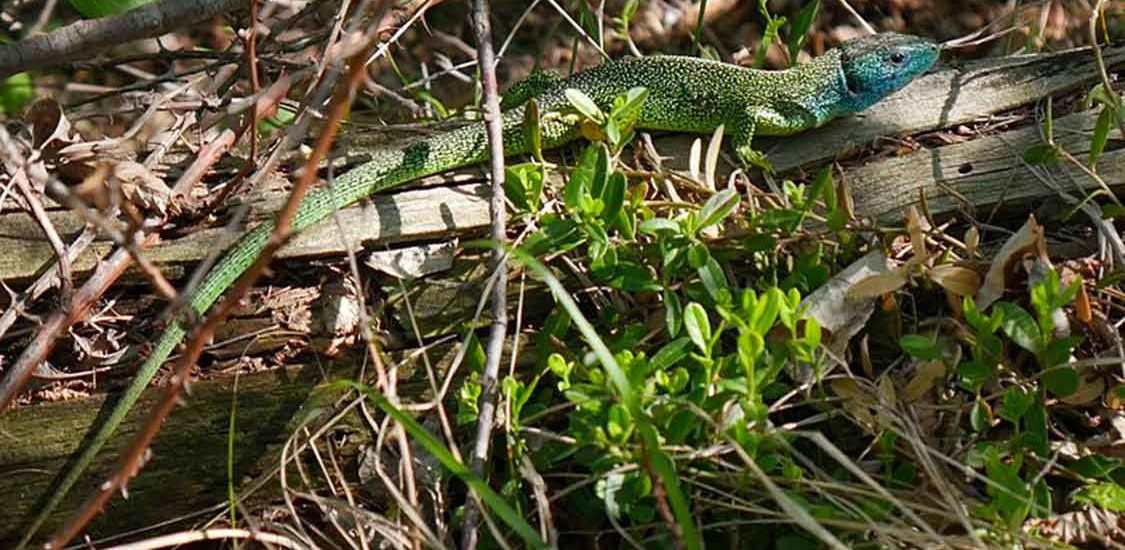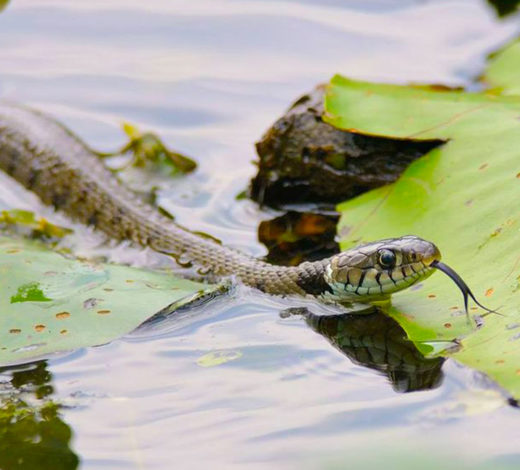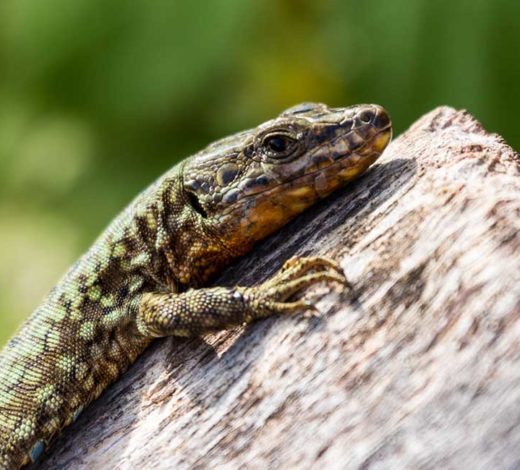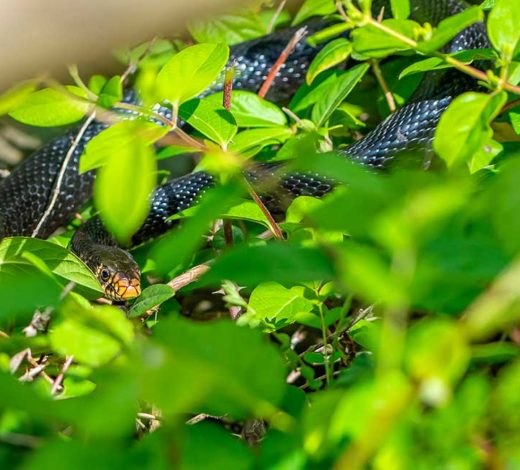Western Green Lizard
(Lacerta bilineata)
A rigorously protected species (Berne Convention on the Conservation of European Wildlife and Natural Habitats, Annex II). The largest lizard to be seen in Lombardy, it has a bright green colour and is very fast.
Distribution
Spread throughout the Italian peninsula and Sicily. It is found in all provinces of Lombardy.
Description
These reptiles are similar to common lizards, but larger. With a bright green colour and very quick, the western green lizard is a diurnal reptile. It can reach a length of 45 cm, including the tail. Its legs have five toes with claws, which allow it to climb quickly. The males are a green colour with black-brown stripes on the back and yellow on the belly. Females may have different colours, from green to beige. During the mating period, the throat of the males becomes an intense blue colour. Green lizards live on insects, larvae, caterpillars, molluscs, small reptiles and mammals, eggs, and nestlings. They also eat plants such as fruit or berries. During the reproductive period, males compete with each other. They face off and lift their heads aggressively, showing their blue throats to their adversaries to intimidate them. At the same time, they whip the air with their tails. The duel ends when the weaker male moves off, declaring its defeat. The winning male may mate with the female. During mating, the male holds the female by grasping her with its mouth on one side. After several weeks, she digs a nest about 10 cm deep and lays from 5 to 25 eggs, each about 18 mm long. The eggs generally hatch in about three months. Baby lizards are a brown colour to camouflage themselves against the ground. They may have green shading on their sides, while their bellies are yellow like adults. They are already independent at birth and do not require parental care.
Habitat
They live in sunny areas, preferably uncultivated, with bushes and shrubs to hide in.
Observation in the Torbiera Reserve
They can easily be seen along all paths in the Reserve.
